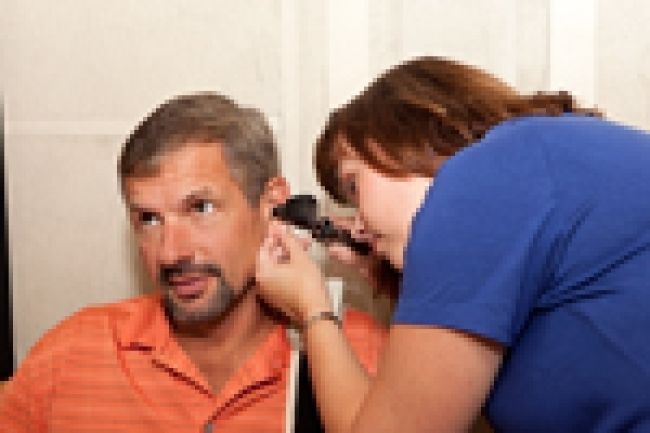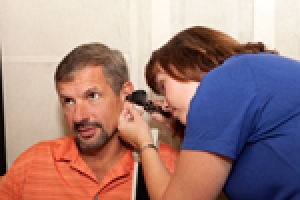
Hearing Conservation: An Interesting Challenge

Helen Keller has been quoted as saying that blindness separates you from things, but deafness separates you from people. While noise in the workplace usually does not produce the profound deafness that Helen Keller had, it can contribute to permanent hearing loss. As the quality of hearing aids has improved immensely over the years, people with mild to moderate hearing loss can often expect significant benefit from them. However, hearing aids usually do not improve hearing as effectively as glasses correct vision.
On two occasions, I have witnessed men breaking into tears after learning that their hearing test results showed deterioration severe enough that they would need to start using a hearing aid. Think about this the next time you don’t want to wear your hearing protection.
A person who has good hearing can enjoy listening to music, hearing birds sing and catching warning sounds such as those of approaching cars. Another characteristic of healthy hearing is that it allows the listener to tune in to a particular speaker and to tune out unwanted sounds such as the din of a social gathering. People with hearing loss in both ears often have difficulty picking out the sounds they want to hear.
Workers have been enduring excessive noise in the workplace for generations. It is one of the most lamented occupational problems. While noise-induced hearing loss is an immense problem, it is preventable. Still, many employees in high-decibel workplaces think that noise-induced hearing loss is an inevitable part of their occupation.
Signs of Hearing Loss
Hearing loss is so common that its impact is often underrated. While there are no visible signs of hearing impairment, there is often a noticeable, if gradual, loss of communication with family, friends, and co-workers. People with hearing loss typically experience a loss of sensitivity to the environment. There is also a cultural resistance to the hard-of-hearing, as hearing loss tends to be viewed as just another effect of aging. Good hearing is often taken for granted until it is lost.
A common first sign of hearing loss is that people don’t seem to speak as clearly as they once did. Sounds such as “P,” “K,” “S,” “T,” “F,” “Sh” and “Th” can be difficult to hear at all. Hearing-impaired people will often become annoyed and sometimes withdraw from social situations.
Hearing loss from noise is often only temporary at first. The worker will experience a reduction in hearing known as a temporary threshold shift. With continued exposure to high decibels, the temporary threshold shift becomes permanent. In order to prevent permanent hearing loss, these temporary shifts can be caught and addressed with a hearing conservation program that includes audiometric testing.
It is important to note that hearing loss can come from non-occupational sources. These can be virtually impossible to differentiate from occupational hearing loss. Examples of non-occupational noise include woodworking tools, chain saws, unmuffled motorcycles, loud music, race cars, fireworks and guns.
Regarding recreational activities, I once attended a football game at the University of Washington’s Husky Stadium where I used the sound pressure meter app on my iPhone to measure the sound made by the loudspeaker, band and the cheering fans. It moved between 90 and 94 decibels for the full four hours I was there. If this sound level was measured at a work site, OSHA would require workers to wear hearing protection.
Tinnitus, or ringing in the ears, is a condition that often accompanies both temporary and permanent hearing loss from noise. This condition can range from mild to severe. Many people with tinnitus complain that they most notice it in quiet conditions, such as when they try to go to sleep. Tinnitus is often a precursor to noise-induced hearing loss and can be a wake-up call to address the problem before it becomes permanent. Some people who already have hearing loss are more distressed by having tinnitus than a lack of hearing. More information about this condition can be found through the American Tinnitus Association (www.ata.org).
Excessive noise can be dangerous, as it may interfere with speech communications and warning signals. There are both professional and recreational activities, such as hunting, for which speech and hearing communication are safety issues. For these occupations, there are sophisticated protective communication devices on the market that use electronics to suppress or cancel out unwanted noise.
Noise can cause other health problems such as fatigue, irritability and sleeplessness. Properly fitted hearing protection can reduce the occurrence of these problems as well. A lower level of noise and a workforce that sustains less hearing loss can lead to greater job satisfaction, safety and productivity. There have even been studies that indicate a reduction in accidents, illnesses and lost time due to noise-related injuries when excessive noise is addressed (e.g., Cohen, 1976; Schmidt et al., 1982).
Establishing a Hearing Conservation Program
Establishing a hearing conservation program requires the cooperation of the entire workforce. While supervisors need to understand the rationale for the program, employees must be educated as to how maintaining a healthy level of noise can affect their well-being. The major components of a typical hearing conservation program are noise measurement, engineering controls, audiometric testing, hearing protection, employee training and record-keeping.
Noise exposures can be measured and recorded in order to determine if a hearing conservation program is necessary. These measurements are taken with either a sound-level meter or a noise dosimeter. A time-weighted average of noise exposures of 85 dBA or higher that lasts more than eight hours is the OSHA standard for launching a hearing conservation program.
Engineering controls, or removing the source of the high decibels, are usually the most effective solutions to a noise problem. Of course, this may not be practical, and it can be very expensive, but there are several low-cost options for managing sound. Using noise-absorbing materials on ceilings and walls, or placing sound-reducing curtains around a noisy area, are simple, effective ways to control noise.
Audiometric testing is the most effective tool for determining whether a hearing conservation program is working. The process includes finding a baseline audiogram and then testing the employee annually in order to compare the results of tests with the baseline. If a series of noise-induced losses is discovered, intervention may be necessary. Actions such as counseling by a doctor or audiologist, revisiting the worker’s hearing protection and noise control, and possibly providing quiet time during the day for the worker’s recovery from the temporary threshold shift can all be effective ways to manage or prevent hearing loss.
Presbycusis and Hearing Protection
The hearing threshold level established by audiometric testing is the softest level of sound that can be detected for a given frequency (measurement of pitch). Everyone, if they live to be old enough, will lose some hearing due to the aging process. The onset and magnitude of presbycusis – the term audiologists use for this loss – will vary greatly among different people. Some individuals will experience a noticeable amount of presbycusis at the age of 50, while others will have good hearing well into their 80s. Genetic factors, along with elements such as illegal or excessive prescription drug use, disease, stress and noise exposure, can all accelerate presbycusis. At any age, hearing loss can occur as a result of exposure to medications that are poisonous to the hearing mechanism. Some of these drugs include certain kinds of antibiotics and some chemicals used in cancer chemotherapy.
Hearing protection needs to be tailored to the size and shape of the individual’s ear canal and the amount of noise in a particular workplace. In fact, some people even have differently sized ear canals in their right and left ears, an important factor to consider when fitting protectors. Earplugs or muffs that do not fit correctly can be uncomfortable and sound may leak around the edges and enter the ear canal.
Noise reduction ratings (NRR) that appear on the packaging for hearing protection are, in actual use, far lower than the number would indicate. In other words, an NRR of 33 decibels (measurement of loudness) may actually be effective only up to 26 decibels. Also, the greater NRR number is not always the best one to choose. Some people who work in moderate levels of noise may need lighter protection in order to enable communication with co-workers.
Training and Education are Key
In order to combat the problem of hearing loss, it is wise to train and educate all relevant employees. When workers understand the effects of noise on hearing, they are more likely to be conscientious about adhering to a hearing conservation program. This includes being more motivated to wear hearing protection, both in their professional and recreational lives.
Keeping good records of hearing tests is typically the best way to determine if hearing levels are deteriorating. It can also be useful to maintain records of noise exposure assessments in order to determine the need for hearing protectors.
In summary, hearing is precious, and managing and preventing its loss continues to be an interesting challenge. With proper training and education, noise-induced hearing loss can be eliminated. By understanding the hazards that contribute to it, it is possible to dramatically reduce the medical expense and emotional and physical pain of this type of loss.
About the Author: Gretchen Erga is director of health and wellness at ESCI Inc. She develops and provides health and wellness programs, and oversees first aid/CPR training and ESCI’s hearing test services. Erga is certified as an American Red Cross first aid/CPR instructor as well as an American Red Cross instructor for CPR for the professional rescuer and health care provider. A 1974 graduate of Western Washington University with a major in speech therapy and audiology, and a major in education, she obtained her master’s degree in education from Western Washington University in 1991. Erga spent 26 years teaching at the intermediate level of public education.

